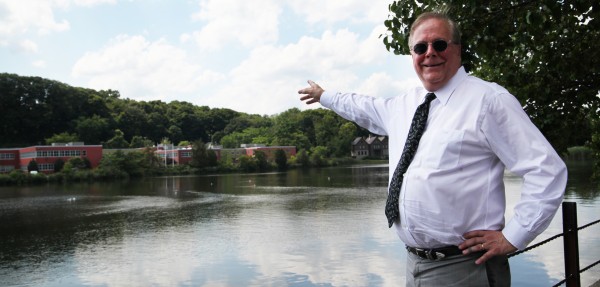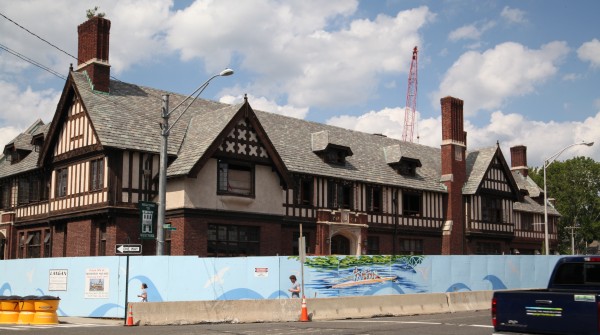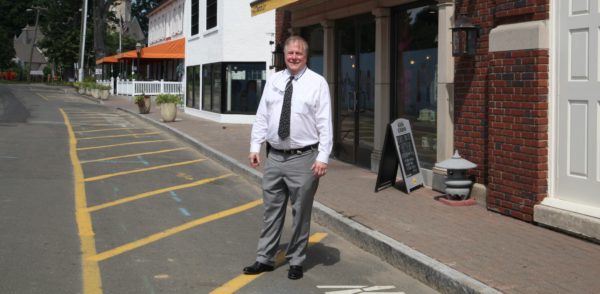The goal of Westport”™s downtown master redevelopment plan is not to attract growing businesses, large retailers or new residents, said Dewey Loselle, the town operations director. Rather, the recently adopted plan will improve what”™s already there and prepare the affluent town for what”™s coming.
“A lot of towns are doing this because they have to, because they”™re in trouble,” he said, adding that Westport is doing well and at about full-business capacity. “This is a downtown enhancement plan. We don”™t necessarily need more business.”
After a year and a half of planning between the town and residents, the Westport Board of Selectmen accepted the plan this month. The plan will improve mobility, transportation, parking and aesthetics, take better advantage of the waterfront and maintain the core values of the town, Loselle said.
The historic town, which developed “haphazardly,” has had sporadic updates but never a comprehensive plan, Loselle said. Some sidewalks are brick and some are pavement. The sidewalk street lamps are meant for highways. Residents joke the cars have the best view of the water because there is parking along the river, which is potential green space, Loselle said.
Some of these “holes” will be repaired in the short-term, with bigger infrastructure changes happening over the next several years. Loselle said the plan is a way for Westport to shape its future, rather than to let it happen passively.
Bedford Square, a 110,000-square-foot mixed-use project on the corner of  Church Lane, Elm Street and Main Street, could bring more people to town when it opens in 2017, said Stephen Desloge, president of the Westport Downtown Merchants Association and part of the committee for the master plan.
He said Westport has become a strong regional retail attraction. Parking is already limited for shoppers and employees, especially during peak times on the weekends, he said.
“It”™s one of these growing pains that has to be faced,” Desloge said.
Westport retains its approximately 27,000 residents and has a net inflow of shoppers from the surrounding area, attracting visitors to downtown, Loselle said. The downtown plan includes some solutions for parking, like co-managing certain parking lots.
To create the redevelopment plan, Westport sought residents”™ feedback through a campaign last year called “Your Downtown,” which involved public workshops, tours, a website and an online survey. Whether to move parking, add more or eliminate some was one of the most contentious issues, Loselle said.
The survey revealed residents are worried about the limits of how much growth the 26-square-mile town can handle. Another running theme was the concern that national chains are replacing independent retailers in downtown. Many independents shops have been pushed out by high rents that bigger companies can afford, he said.
Desloge said there are two demographics ”” longtime residents who moved in when independent stores were predominant and the newer generation who is moving to Westport partly for the national chains in the downtown.
“It”™s the changing of the times,” he said. “Many of these towns are being transformed. They”™re attracting new real estate.”
In New Canaan and Greenwich, two peer towns the committee reviewed when creating the master plan, the main streets are also seeing more national retailers move in, Desloge said.
There are still five or six independent stores on Westport”™s Main Street, he said. Those that cannot afford it move where rent is more affordable a few blocks away and do fine, he said. Desloge, who owns Rockwell Art and Framing on Post Road, said he might have a stronger business if he moved to Main Street, but it is not worth the financial risk.
Loselle said the town has a new rule preventing a company from coming in and taking up more than 20,000 square feet of storefront. The town also bought a historical house, Kemper Gunn, and relocated it to Elm Street for a smaller store to rent.
Elm Street, which Loselle said is currently one of the less-attractive roads, will be revitalized in the short-term plan.
Westport”™s short-term plans ”” incorporating 24 months ”” are easier and less expensive fixes than what may come later, Loselle said. The two-year fixes include: improving parking, sidewalk paving and turning Church Lane into a “shared street” that is one level with no sidewalks and cars and pedestrians sharing the road. Taylor Place is also slated to become a shared street in the mid-term plans that will occur over the next two to five years.
The midterm plans involve connecting downtown along the riverfront and across Post Road and opening a cinema. If approved, the town will turn the vacant Save the Children building on the west side into another mixed-use development, Loselle said.

- Church Lane is destined to become a “shared street,” where cars and pedestrians share the road. Photo by Danielle Brody
Long-term plans will start after five years and could include more complex and creative endeavors, like constructing a downtown landing and evaluating the need for more structural parking.
“What the town is doing in its master plan is understanding that we now have the opportunity to take all of the assets that the town has and create not just a great shopping experience, but sort of a great community experience for people that just want to come downtown and enjoy the waterfront,” Desloge said.
Loselle said making Westport more desirable could come with a price for residents, like more visitors and higher property values.
“People come here already,” Loselle said. “Some say too many people come here.”






















Comments 2